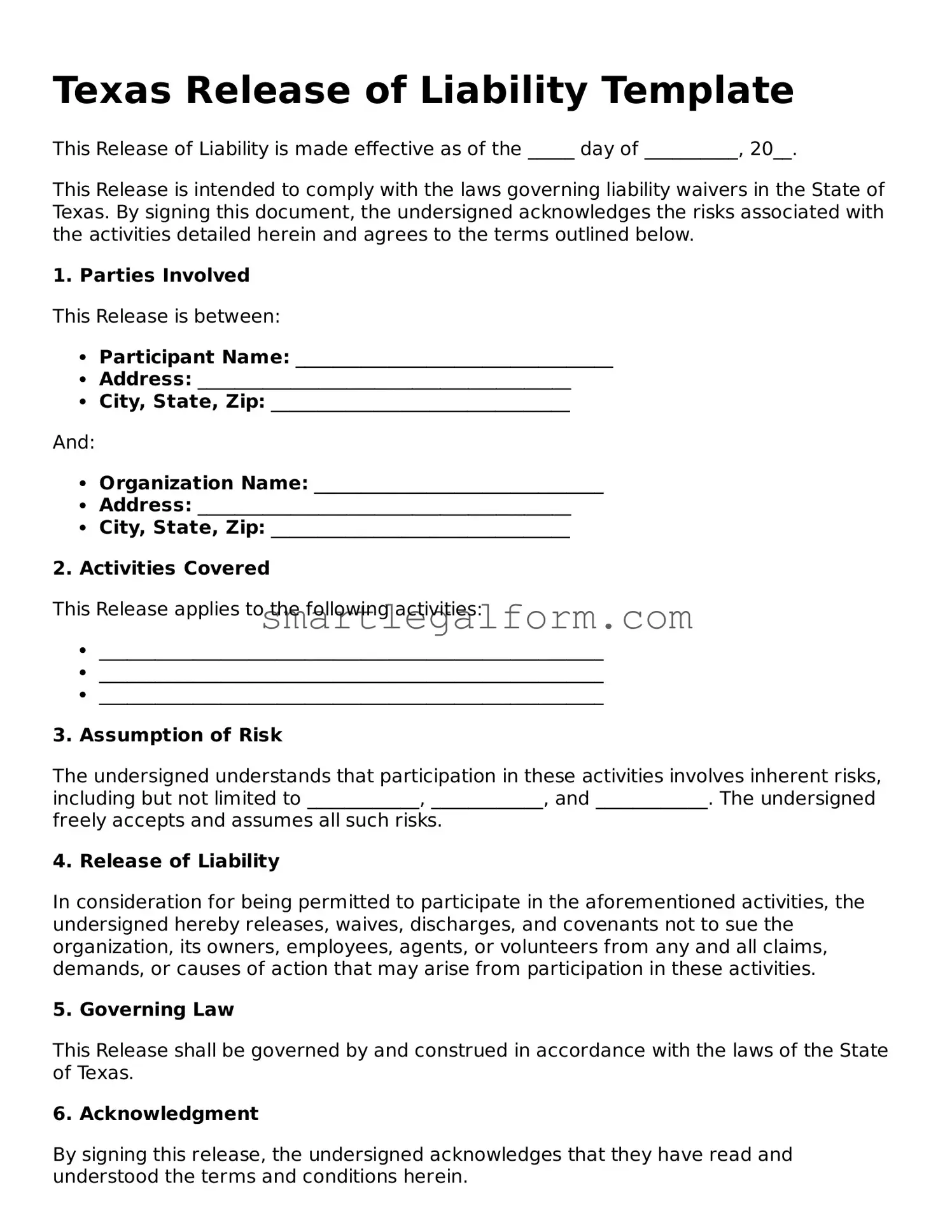Texas Release of Liability Template
This Release of Liability is made effective as of the _____ day of __________, 20__.
This Release is intended to comply with the laws governing liability waivers in the State of Texas. By signing this document, the undersigned acknowledges the risks associated with the activities detailed herein and agrees to the terms outlined below.
1. Parties Involved
This Release is between:
- Participant Name: __________________________________
- Address: ________________________________________
- City, State, Zip: ________________________________
And:
- Organization Name: _______________________________
- Address: ________________________________________
- City, State, Zip: ________________________________
2. Activities Covered
This Release applies to the following activities:
- ______________________________________________________
- ______________________________________________________
- ______________________________________________________
3. Assumption of Risk
The undersigned understands that participation in these activities involves inherent risks, including but not limited to ____________, ____________, and ____________. The undersigned freely accepts and assumes all such risks.
4. Release of Liability
In consideration for being permitted to participate in the aforementioned activities, the undersigned hereby releases, waives, discharges, and covenants not to sue the organization, its owners, employees, agents, or volunteers from any and all claims, demands, or causes of action that may arise from participation in these activities.
5. Governing Law
This Release shall be governed by and construed in accordance with the laws of the State of Texas.
6. Acknowledgment
By signing this release, the undersigned acknowledges that they have read and understood the terms and conditions herein.
7. Signature
______________________________
Participant Signature
______________________________
Date
8. Parent/Guardian Signature (if participant is under 18)
______________________________
Parent/Guardian Signature
______________________________
Date
